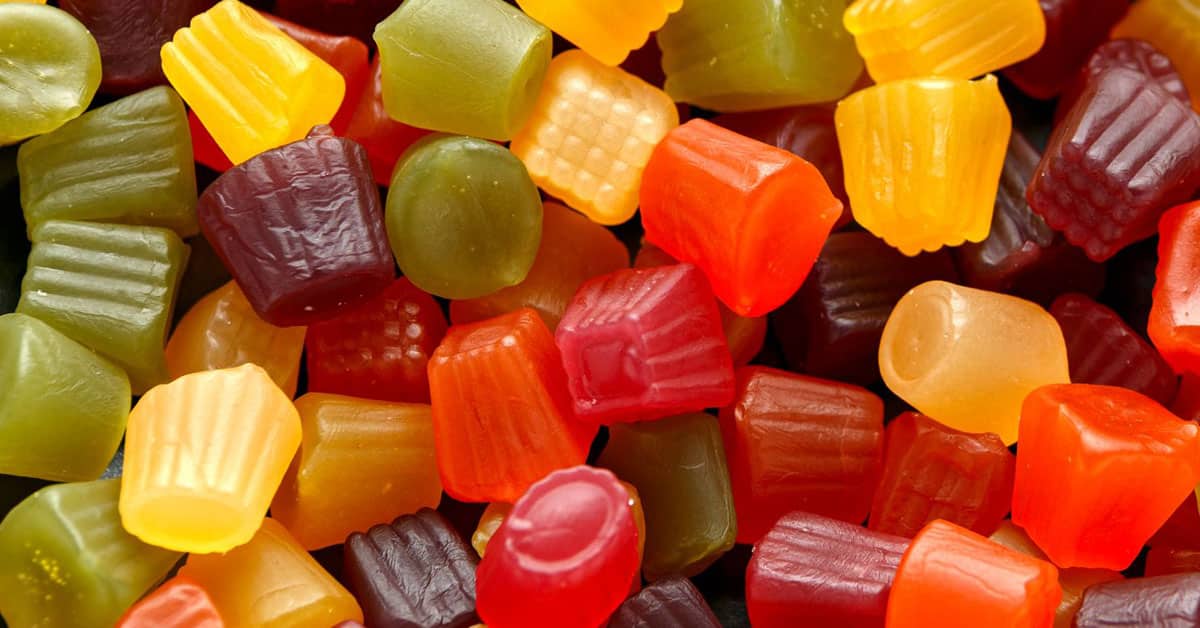Midget Gems – History of Colorful Miniature “Jewels”
Midget gems are like cute little miniature jewels. These authentic, succulent hard gum candies, are produced in Cleckheaton, West Yorkshire by Lion confectionary. Midget Gems also referred to as Mini Gems, are solid, chewy candies that resemble wine gums but are much tougher. These succulent, delicious jewels are available in a variety of flavors, including lime, pear, orange, blackcurrant, apricot, and raspberry.
In this article, we’ll delve deeper into the history, ingredients, and fun facts of Midget Gems, and discover why they continue to be a favorite candy today.
Please leave a review or any memories of this snack in the comments at the bottom of this page. Thank you!
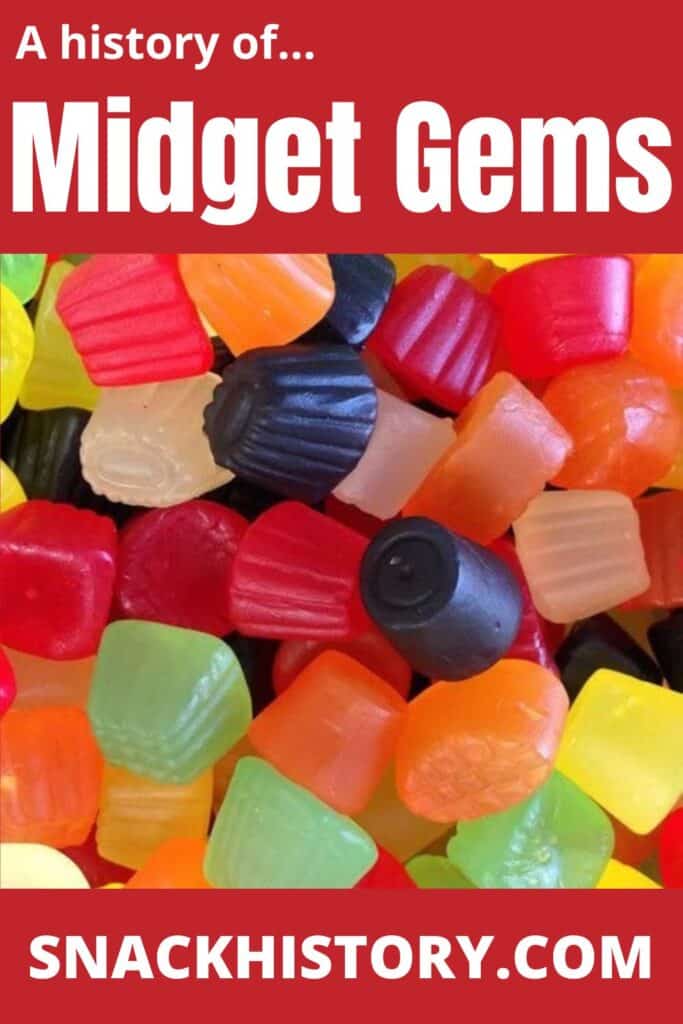
History – How Everything Started
Lion Confectionery has been producing its distinctive chewy candies since 1903. In their hometown, Frank and Albert Hillard started making quantities of boiled candy in a series of cottages. After deciding it would be a good plan to set up a production line to make the candies on a larger scale, they did so.
They needed money to do this, and a local businessman named John Hillard generously lent them some of it under the stipulation that their company name would be the same as his network of corner stores, Lion Stores.
The Lion Confectionery Company’s top-selling brand, Midget Gems, was very well-liked in the north of England. To sell the candy all over the nation, the business teamed up with the Cadbury Trebor Bassett trademark Maynard’s in 1995. The black Midget Gems’ licorice flavor was replaced with blackcurrant when the candy was rebranded under Maynard’s label, but only in the bagged variety.
The licorice flavor has now returned in some of the more recent packaged products.
The fact that Midget Gems were frequently offered loose from a container or cask was a key selling feature. This reduced their cost and increased their appeal.
Lion Confectionery Company
Lion confectionery company not only makes the “Mini Gems,” but also other very well-known candies. Liquorice Gums, Wine Gums, Fruit Salad, Football Gums, and Poor Ben are all produced by this company. Fruit pastilles and Butterscotch Gums are undoubtedly the brand’s most popular products.
Speaking of evolving times, Maynards and Lion were both acquired by Cadbury before Lion was subsequently transferred to its present owners, Tangerine. However, adjustments were made to some of Lion’s confectionary products during that period, most notably the removal of the licorice from the Sports Mixtures and Midget Gems.
However, it is fair to assume that after Tangerine took over, they added black licorice to the two varieties once again. Tangerine uses the original Lion formula for Lion Midget Gems, which has a distinct citrus flavor. Knowing that these Miniature Gums are manufactured with only natural flavors and colors gives you peace of mind.
Overview of Midget Gems
Midget Gems are made from sugar, glucose syrup, bovine gelatin, different carbohydrates, including maize starch, and various flavors and colors. Sweets were typically sold by the quarter, or a quarter of a pound, and were traditionally sold from polished glass cases in confectionary stores.
A sweet lady with immaculately clean hands would carefully measure out the sweets to the quantity the buyer desired. For kids, the appeal of Midget Gems is that they are small, come in a diversity of colors and flavors, and give the impression that you are receiving a lot for your money.
Lion Confectionery is not the only business making those delicious candies. They are produced by the Glisten Confectionery brand under the Victoria name. The company declared in 2007 that it would stop using any artificial colors or flavors in its candies.
A lot of shops and retail chains, including Asda, Tesco, Marks & Spencer, and Sainsbury’s, produce their own variants of Midget Gems. There is a difference between Lion Confectionery and other companies’ “Midget Gems.” Lion’s Mini Gems are firmer, chewier, and shinier, and their flavors last longer.
Midget Gems have gained a reputation as a beloved candy, with fans all over the world. Even Liverpool Football Club has expressed their appreciation for these little gems; the club has previously received containers of Midget Gems with their logo. It’s not just Liverpool FC, though – Midget Gems frequently make appearances on “favorite candy” lists, thanks to their irresistible combination of chewy texture and fruity flavor.
From “Midget” to “Mini”: Reasons for Name Change
To prevent upsetting individuals who have dwarfism, Marks & Spencer changed the name of its well-known Midget Gems candies. After a mobility scholar expressed worries about the use of the term “midget,” they will now be known as “Mini Gems.” Dr. Erin Pritchard, who suffers from the growth-impairing disease achondroplasia, contacted several supermarkets and candy producers about changing the name.
The word “midget,” according to a professor in disability studies at Liverpool Hope University, is used to disparage people who have developmental issues and has previously been asked for its use to be considered hate speech.
The first store to respond to her campaign was M&S, which put out the modified labeling while declaring its commitment to being an open merchant. A spokeswoman said that they launched new Mini Gem packaging, which has since been rolled out to all of the stores. This was done after recommendations from employees and the insights provided by Dr. Erin Pritchard. As a diverse and inclusive store, Tesco has also stated that it will be reviewing the moniker of its products and does not want any of its goods to “cause offense.”
Dr. Pritchard asserted that “a lot” of people were “getting angry” about the shift after hearing the news. She also stated that the elimination of the term “midget” from a candy packet seemed to be upsetting several men of average build. Due to its history in Victorian circus shows, the term “midget” should be classified as a form of hate speech.
There were a range of responses on social media regarding the Midget Gems name change. Later that year, Tesco and Maynards Bassetts did the same.
Logo
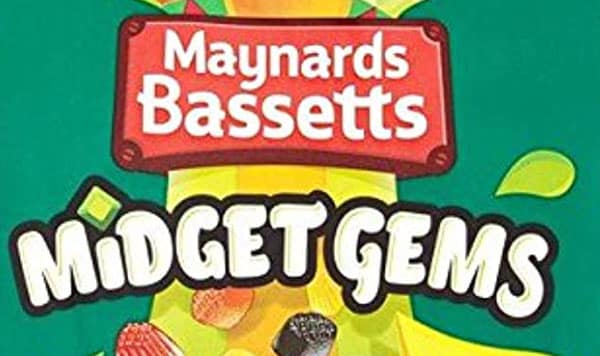
Ingredients
Numerous Midget Gem types also have different types of ingredients. However, almost all types include potato starch, maize starch, sugar, glucose syrup, water, beef gelatin, flavorings, anthocyanins, curcumin, capsanthin, and sunflower oil.
In addition, there are plant concentrates such as safflower extract and spirulina concentrate. Acids include lactic acid and acetic acid. Carnauba wax is used as a coating agent in this sweet snack.
The ingredients of Midget Gems are:
- Glucose Syrup
- Sugar
- Starch
- Gelatine
- Water
- Acids (Citric Acid, Acetic Acid)
- Flavorings
- Vegetable Oils (Palm Kernel, Coconut, Sunflower)
- Colors (Anthocyanins, Paprika Extract, Vegetable Carbon, Lutein, Curcumin)
- Glazing Agent (Carnauba Wax)
Nutrition
| Serving Size: | 25 sweets (50g) | % Daily Value* |
| Amount Per Serving | ||
| Calories | 175 | |
| Total Fat | 0.2g | |
| Saturated Fat | 0.2g | 1% |
| Sodium | 10mg | |
| Total Carbs | 40g | 14% |
| Total Sugars | 29g | |
| Protein | 4g | 8% |
- The % Daily Value (DV) tells you how much a nutrient in a serving of food contributes to a daily diet. 2,000 calories a day is used for general nutrition advice.
Gelatin
Both the Ancient Chinese and the Ancient Egyptians used gelatin as a dietary and medicinal ingredient. As far back as 8,000 years ago, compounds similar to gelatin and collagen were used as adhesives. There are accounts of a particular savory jelly being prepared and given in the Middle Ages in the regal palaces of England.
Similar to how vitamins take center stage in dietary studies today, the gelatine was at the vanguard of food science two hundred years ago. It was widely recognized as an incredibly nutritious meal, especially by the French. Additionally, it was frequently used as a source of protein during the Napoleonic Wars to support both the French troops and citizens when food was in short supply. This was particularly true during the siege of Paris when a physician by the name of Gerard gave his patient gelatine broth with added fat, and they did so to improve their health, surviving the confinement.
The first gelatin pills were created in 1833 to help hide the flavor of unpleasant medications. In the 1870s, the first companies with a focus on making these containers began to produce them. It was widely used in numerous medicinal operations both during the First and Second World Wars. It has also been discovered to be helpful in a wide range of illnesses. Today, among other businesses, it is widely used in the culinary, cosmetics, healthcare, and pharmaceutical sectors.
Wine Gums
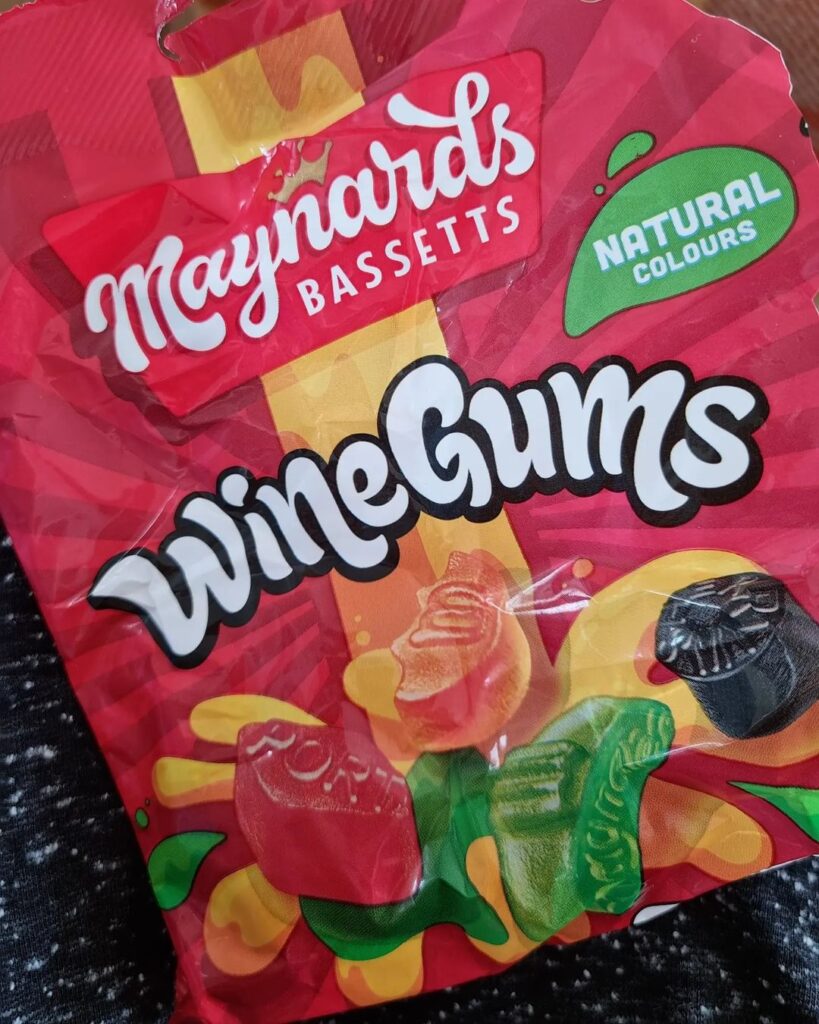
Wine gums are very similar sweets to the Midget Gems and are also manufactured by Lion’s Confectionery. They are chewy, hard pastilles that resemble gumdrops without the sugar coating. They are a British invention. Each brand has a unique formula that uses different sugars, flavors, and colors. In addition to several European nations, wine gums are famous in the United Kingdom, Australia, Canada, Ireland, South Africa, and many other Commonwealth nations. Lion, Bassett’s, and Maynard’s are popular wine gum manufacturers.
In 1880, Charles Riley Maynard launched his company in Stamford Hill, London, where he and his brother Tom made confections while his wife Sarah Ann served clients. Maynards candy continued to expand, and the business was established in 1896. Charles Gordon Maynard, Maynard’s son, debuted Maynards Wine Gums in 1909.
According to the confectionery company Cadbury, the most well-known colors of Wine Gums are red and black. In the United Kingdom and the United States, the red flavors are typically cherry in form, strawberry flavors are red, and raspberry is black. There have been issues with limited-edition dark-only wine gums, and in 2010, a limited “fruit duos” version with two colors and flavors on each gum was made.
Pictures
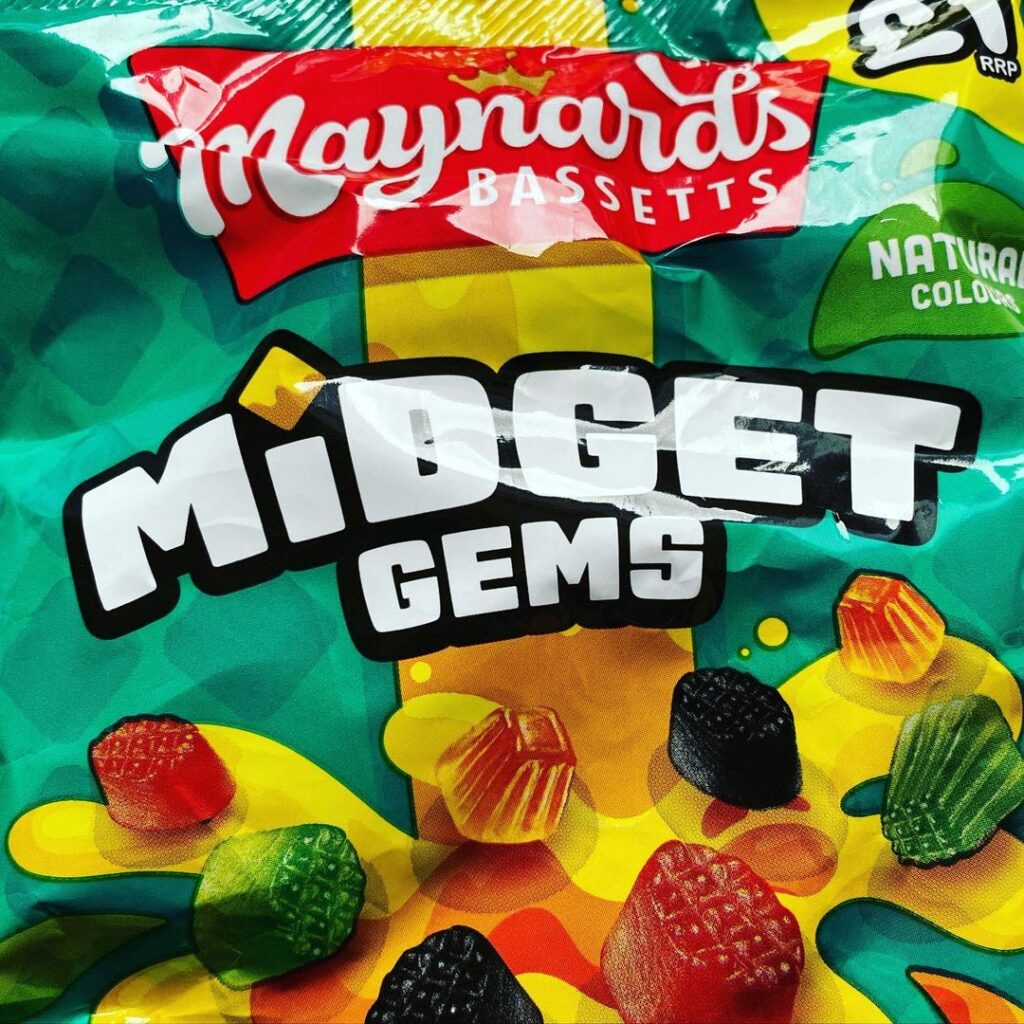
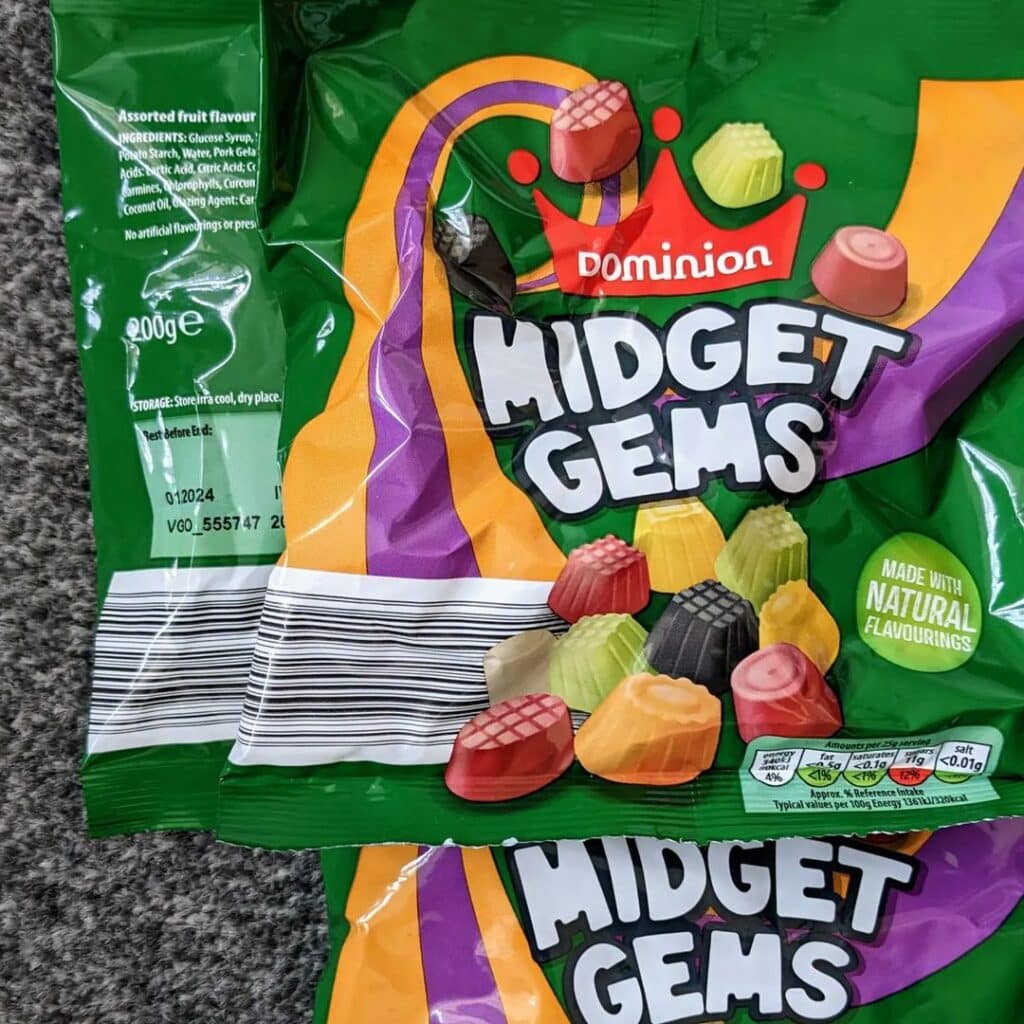
Bottom Line
There are now many different colors and flavors available for Midget Gems, giving customers more options when buying them. When it comes to Midget Gems, the original ones are the “king,” renowned for their solid chew and potent flavors. The licorice flavor is still present in the black miniature jewels, as it should be. Mouthwatering little original Midget Gems have a renowned, beloved taste and are loved and cherished by many people.

Nato is a content writer and researcher with a background in psychology. She’s passionate about writing about the candy industry and exploring the cultural significance of sweets and treats. She believes that the stories behind our favorite snacks can reveal a great deal about our values.
Please leave a review or any memories of this snack in the comments below. Thank you!
Click here for a full A-Z list of Snacks and Candy
